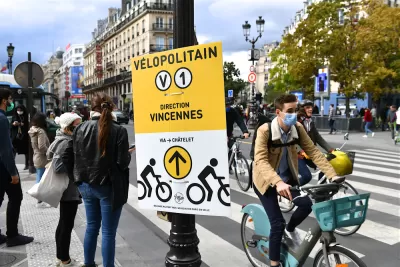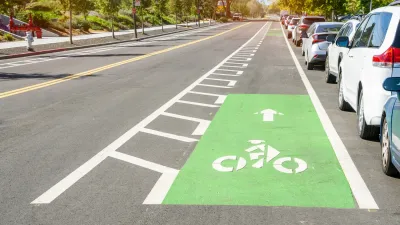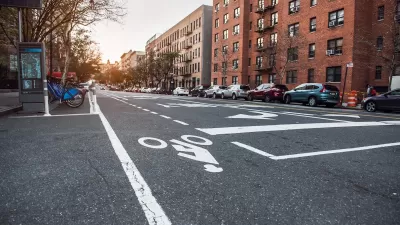While some cities are reverting back to pre-pandemic street configurations, others are taking advantage of the momentum for bike and pedestrian infrastructure to make pandemic-era projects permanent.

Writing in Momentum Magazine, Ron Johnson highlights three cities where pandemic-era bike infrastructure projects have become permanent.
In Toronto, Yonge Street, a busy north-south corridor, received separated bike lanes. “After 18 months of installation, the data demonstrates increases (ranging between 57 percent and 250 percent) in cycling trips and increases in pedestrian trips (ranging between 59 percent and 145 percent) on the corridor, as well as support for local business including an increase from 10 CaféTO patios in 2020 to 21 patios on the corridor in 2022.” City staff is recommending making the lanes permanent and did so for two other pandemic bike projects in the city.
In San Francisco, thanks to consistent lobbying from bike activists, Golden Gate Park’s John F. Kennedy Drive has had intermittent closures for decades. San Francisco Bicycle Coalition executive director Janelle Wong says “the emergency order shutting it down, I think for the first time allowed people to see what seven days a week, 24 hours a day of closing that street looks like and what it feels like,” making it easier to gain support for permanently implementing the change.
Across the Atlantic, Paris has been pouring massive effort into building bike infrastructure and creating more multimodal and car-free streets. The transformation of the city’s famous Rue de Rivoli into a bike and pedestrian road during the pandemic signaled a turning point for the French capital. “In 2021, one lane of traffic for transit, emergency vehicles and the like was added back and the new configuration is now permanent.”
FULL STORY: Three cities making pandemic-inspired bike expansion permanent

Trump Administration Could Effectively End Housing Voucher Program
Federal officials are eyeing major cuts to the Section 8 program that helps millions of low-income households pay rent.

Planetizen Federal Action Tracker
A weekly monitor of how Trump’s orders and actions are impacting planners and planning in America.

Ken Jennings Launches Transit Web Series
The Jeopardy champ wants you to ride public transit.

Washington Legislature Passes Rent Increase Cap
A bill that caps rent increases at 7 percent plus inflation is headed to the governor’s desk.

From Planning to Action: How LA County Is Rethinking Climate Resilience
Chief Sustainability Officer Rita Kampalath outlines the County’s shift from planning to implementation in its climate resilience efforts, emphasizing cross-departmental coordination, updated recovery strategies, and the need for flexible funding.

New Mexico Aging Department Commits to Helping Seniors Age ‘In Place’ and ‘Autonomously’ in New Draft Plan
As New Mexico’s population of seniors continues to grow, the state’s aging department is proposing expanded initiatives to help seniors maintain their autonomy while also supporting family caregivers.
Urban Design for Planners 1: Software Tools
This six-course series explores essential urban design concepts using open source software and equips planners with the tools they need to participate fully in the urban design process.
Planning for Universal Design
Learn the tools for implementing Universal Design in planning regulations.
Heyer Gruel & Associates PA
Ada County Highway District
Institute for Housing and Urban Development Studies (IHS)
City of Grandview
Harvard GSD Executive Education
Toledo-Lucas County Plan Commissions
Salt Lake City
NYU Wagner Graduate School of Public Service





























